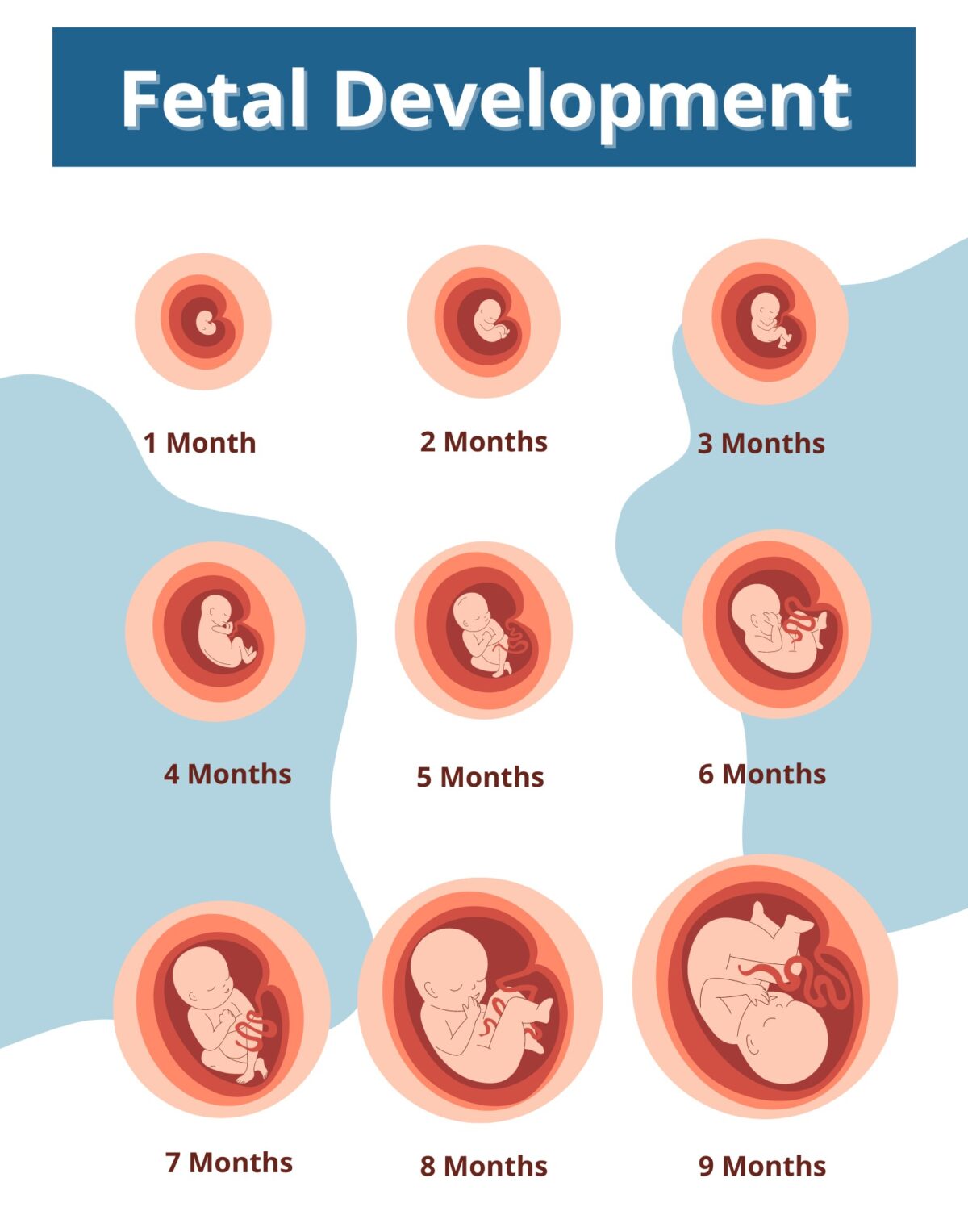“The Incredible Journey: Navigating the Stages of Fetal Development”

During the nine months of your pregnancy, the fertilized egg is divided, grows, and develops. Until your baby is ready to meet the world and join your family. It is an amazing journey for both the pregnant women and their unborn child. A typical pregnancy lasts 40 weeks, or roughly nine months. The total length of a pregnancy consists of three trimesters, each lasting around three months. A fetus should ideally spend each day in the womb for proper development until it is at least 37 weeks pregnant or full term. Child care has advanced significantly with modern medicine. And the womb still has the ideal environment for a baby to develop properly. Not every premature baby experiences health problems. And the results are better for those born near to their time of delivery. Here, we cover the several stages of fetal development.
The Time When Your Pregnancy Begins
Throughout a woman’s reproductive years, an egg develops inside the ovary inside a cyst called a follicle once a month. Ovulation is the process by which the follicle releases the egg in the fallopian tube. Usually, ovulation happens two weeks into a woman’s monthly cycle. For the most of the month, the sperm do not fertilize the eggs. And the vagina sheds uterine lining during the regular monthly cycle.
The process of fertilizing an egg is called conception. The fertilized egg, sometimes referred to as a zygote, quickly multiplies into many cells to become a blastocyst. It starts its trip to the uterus in the fallopian tube, where it primarily remains for three days.
Different stages of fetal Development
People who study fetal development and genetics have more varied perspectives on pregnancy. They examine the following stages of fetal development by week:
- Germinal stage (weeks 2-4)
- Embryonic stage (weeks 5 to 9)
- Fetal stage(more than week 10)
- Germinal Stage (Weeks 2–4)
Most people are usually aware of the early stages of development. It begins in the outer portion of the fallopian tube, when the sperm and egg converge. A zygote is created when the egg & sperm combine. And after that zygote will continue to travel in the direction of the uterus. The fertilized egg needs to travel the length of the tube and land in the waiting uterus. It happens over the course of 7 or more days. During this period the body is not aware that a pregnancy is developing.2. Embryonic Stage (Weeks 5 to 9)
The cells are no longer considered embryos and now have a clear human origin. Along with that, the embryo does not resemble what most of us imagine when we think of having a child. Every organ system is forming during this crucial embryonic stage.3. Fetal Stage (Weeks 10+)
The majority of people have heard the word “fetus.” It is the term used to refer to a baby in the fetal stage. Everything is there at the less thrilling fetal stage. There are many changes and improvements yet to happen. Those changes prepare the fetus for a life outside the womb.From weighing one gram and measuring one inch, the fetus will grow to almost seven pounds in weight. The fetus is twenty inches long, but it is also getting bigger and heavier.
Many small changes are needed in the organ system. The baby’s brain will grow bigger and change shape. But the deepening of its neural fields and significant weight gain do not occur until the final weeks of pregnancy.
Development of Fetus in First Trimester of Pregnancy
Your baby will grow from an egg to a fertilized egg then to a zygote. And then to a blastocyst to a embryo and finally into a fetus throughout the first 3 months of pregnancy. The following are typical responsibilities that are available throughout first trimester or at different stages of fetal development by month:
- Blood Tests:
The human chorionic gonadotropin and plasma protein levels will be measured through these tests. - Ultrasound:
An ultrasound screening for nuchal translucency in the first trimester will help the doctor in determining baby’s risk of deformities. An ultrasound or pictures showing the stages of fetal development are necessary to confirm the due date. And estimate the number of fetuses present, and assess the state of your uterus and cervix.
Issues Regarding Fetal Development
Physical problems can block normal prenatal growth, and certain factors can change the direction of healthy fetal development genetically. Occasionally, these issues will completely stop the process, causing the baby to stop growing. At this point, mother will probably reach either the germinal stage when she is not aware that she is pregnant. Or she will reach the embryonic stage, when she may or may not be aware of her pregnancy.
Conclusion
We have fully addressed all details regarding the stages of fetal development in the post mentioned above. We really hope this content will be useful to you in understanding all the different stages in development of fetus. If this information has been helpful to you, please tell others about it so they can benefit from it too. Click here









